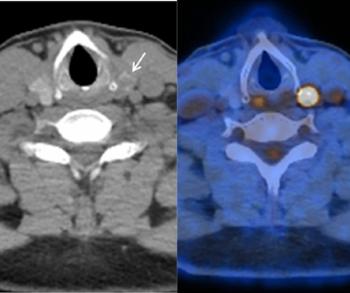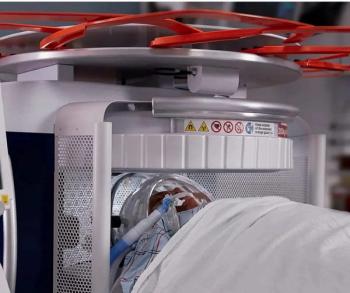
Threshold Values on CT Scans Help Identify Osteoporosis Opportunistically
Radiologists should use this simple measure to detect osteoporosis when reading chest or abdominal CT scans and refer to orthopedic specialists for follow-up with positive findings.
Opportunistic computed tomography (CT) screening of osteoporosis on the thoracic and lumbar spine showed “reasonable” pooled sensitivity and specificity when using specific Hounsfield unit (HU) values as a threshold, according to a meta-analysis published recently in
“We recommend radiologists use this simple measure to detect possible osteoporosis when reading chest or abdominal
While osteoporotic fractures are a major contributor to morbidity and mortality in later life, these fractures are underdiagnosed and undertreated. In this meta-analysis, the researchers aimed to assess the pooled diagnostic sensitivity and specificity of CT images for diagnosing osteoporosis in patients who meet the World Health Organization dual X-ray absorptiometry (DXA) osteoporosis criteria using specific HU values as a threshold.
For more expert insights and the latest news, subscribe to the Diagnostic Imaging e-Newsletter here .
Ten eligible studies were identified from the earliest available date through July 1, 2018, in which participants underwent CT scans of the lumbar and/or thoracic spine. These scans had been carried out for different indications, with HU measurements were used to identify osteoporosis. DXA scans functioned as the reference standard.
For diagnosing osteoporosis, the mean area under the hierarchical summary receiver operating characteristic (ROC) curve was 0.84 (95% CI: 0.81, 0.87). The pooled diagnostic odds ratio suggested that patients with osteoporosis were 16.4 times more likely to have positive CT results compared with those without osteoporosis. However, the authors cited evidence of possible publication bias. The pooled diagnostic sensitivity and specificity of CT images to identify osteoporosis were 0.83 and 0.74, respectively, and 0.73 and 0.71 after adjusting for this bias.
Further, the researchers found that DXA criteria and country of the study were significant factors associated with the sensitivity of CT in detecting osteoporosis, while scanner manufacturer was associated with both sensitivity and specificity of CT.
“Radiologists should be aware of the vendors of the scanners and make sure they are using the correct CT HU threshold values in order to have a reasonable accuracy for detecting osteoporosis,” the authors said.
The authors noted that the meta-analysis was limited by the small number of studies.
Newsletter
Stay at the forefront of radiology with the Diagnostic Imaging newsletter, delivering the latest news, clinical insights, and imaging advancements for today’s radiologists.




























